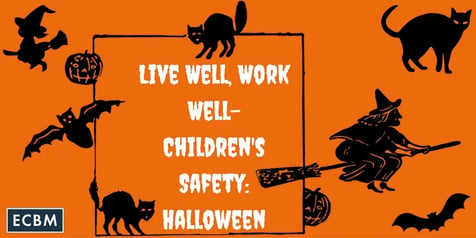
During all the fun of Halloween, it is important to remember that this holiday requires some extra safety precautions. Most Halloween-related injuries can be prevented if parents supervise their children’s activities.
Costume Safety
- Think safety when selecting your child’s costume; avoid long, baggy or loose-fitting costumes and shoes that may be difficult to walk in.
- Choose costumes, wigs and accessories made from fire-retardant materials.
- Select costume colors and materials that are highly visible to motorists.
- Opt for facial makeup instead of a mask that may limit a child’s vision or breathing.
- Buy makeup labeled “FDA- Approved” or “Non-toxic”, and remove makeup promptly to avoid allergies or adverse reactions.
- Make sure costume accessories such as swords or magic wands are made of flexible materials.
- Add strips of reflective tape to costumes and trick-or-treat bags to make children more visible.
Pumpkin Carving Safety
- Carve pumpkins on a flat surface with good lighting.
- Consider using a pumpkin-carving kit that includes special, easy-to-use cutting tools.
- Have children ages 5 and younger draw on the pumpkin’s face – then you do the carving.
- Light pumpkins using votive-style candles.
- Place lighted pumpkins away from flammable objects, such as curtains.
- Never leave lit pumpkins unattended.
Trick-or-Treating Safety
- Remind children to walk only on sidewalks, and to look both left and right before crossing at corners or crosswalks.
- Never let a child enter a home to receive candy or a treat unless accompanied by a parent.
- Instruct your child to visit only well-lit houses.
Never allow children under the age of 12 to trick-or-
- treat alone. Older children should plan their route ahead of time so parents know where they are.
- Instruct children to never approach a car, or accept treats from a person in a car.
- Remind children to stay alert for house pets and strangers.
- Inspect your children’s candy before they eat it. Wrapped treats are safest. Dispose of fresh fruit, unwrapped or homemade treats or anything that looks remotely suspicious.
- Check for choking hazards, such as hard candy, gum, peanuts, or small toys before letting a small child eat his or her treats.
Did You Know...?
If your town allows trick-or-treating at night, do not overestimate your child’s street-crossing skills. Most children are used to walking during daylight hours, so evening trick-or-treating may pose a completely new risk to them.
This article is for informational purposes only and is not intended as medical advice.
For further information, please consult a medical professional.
© 2007-2008 Zywave, Inc.
